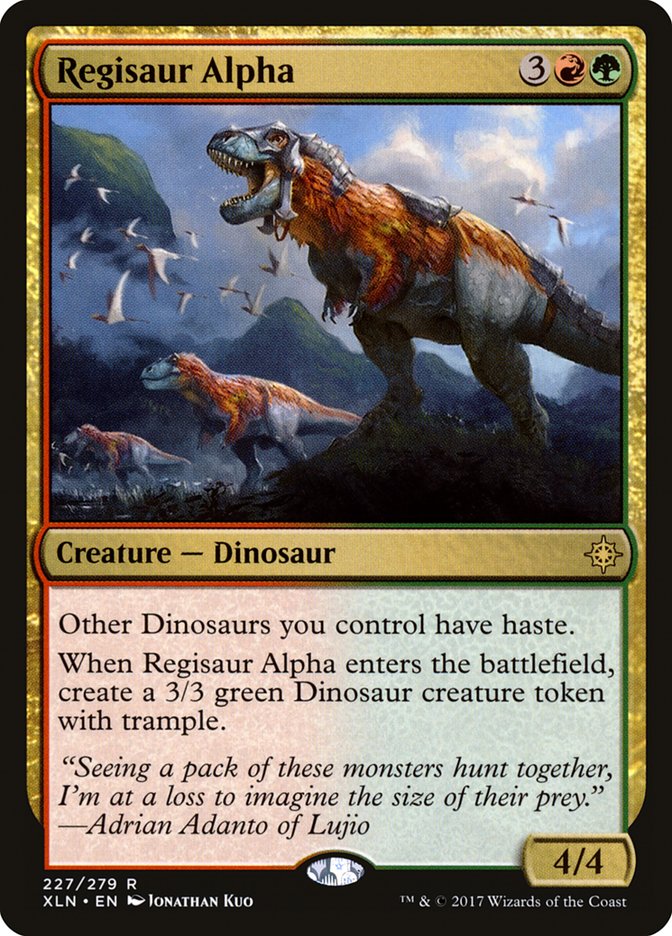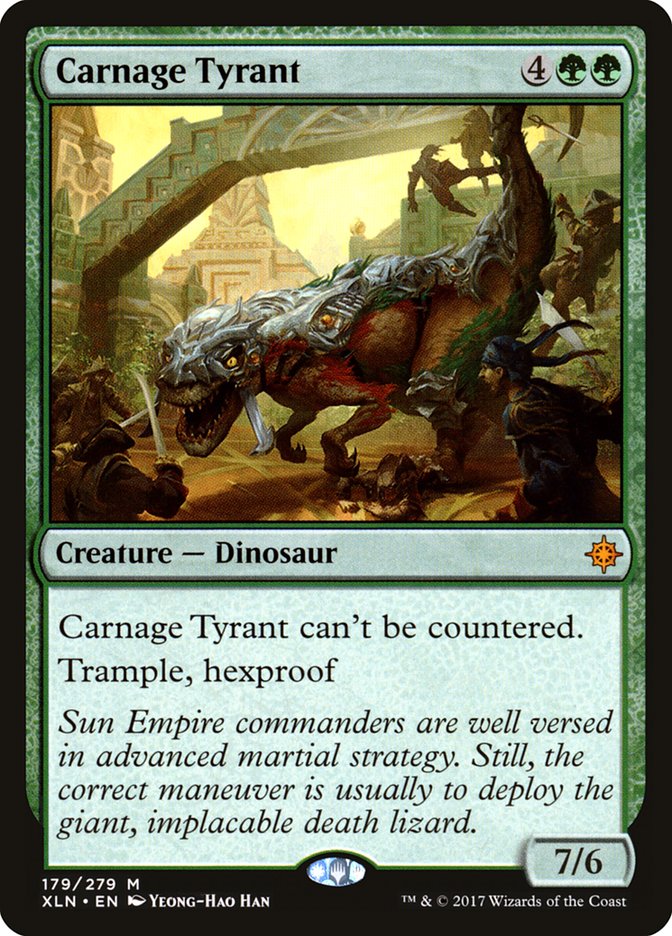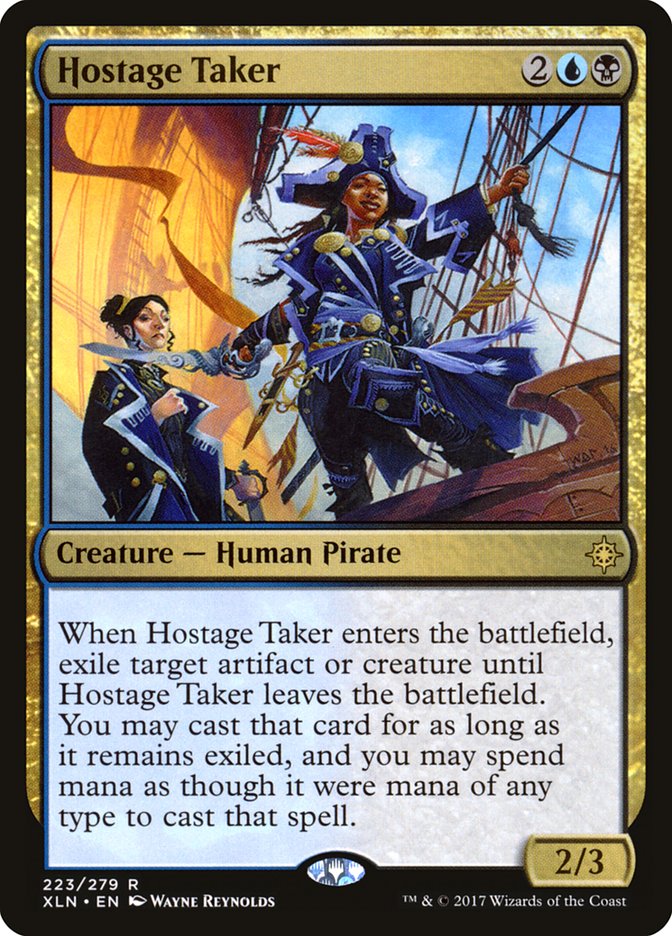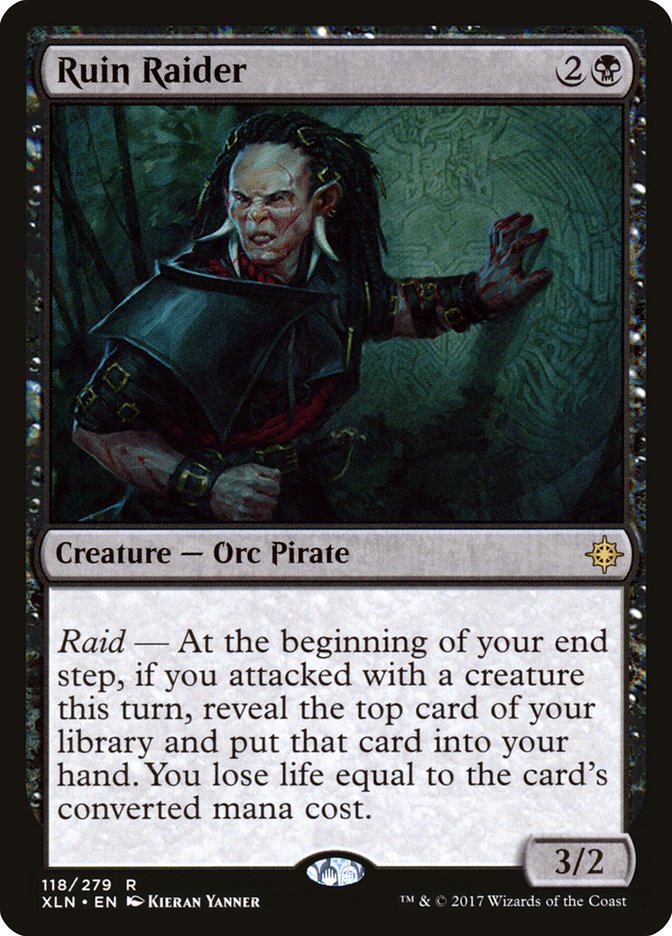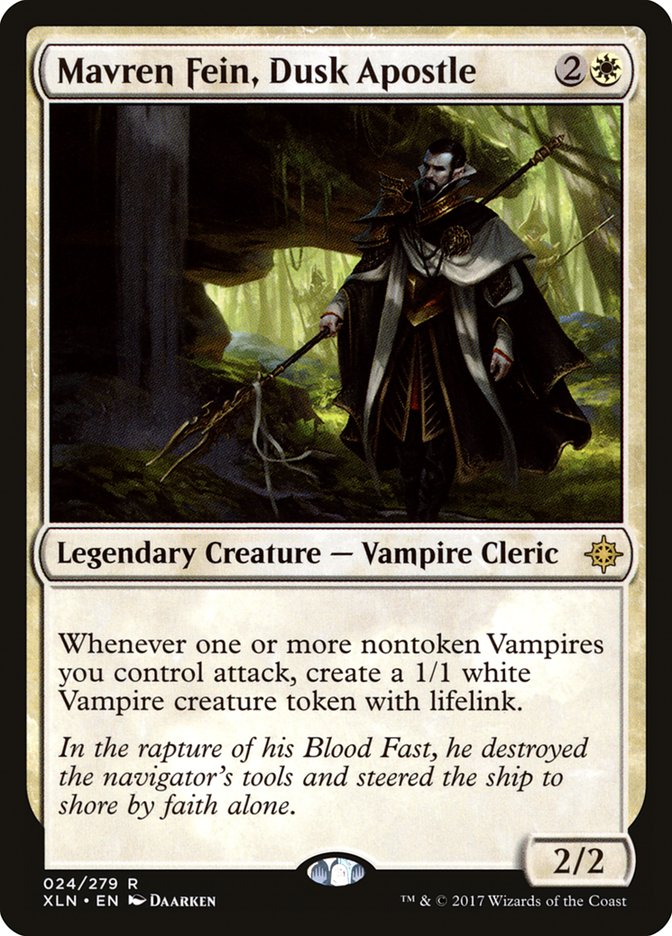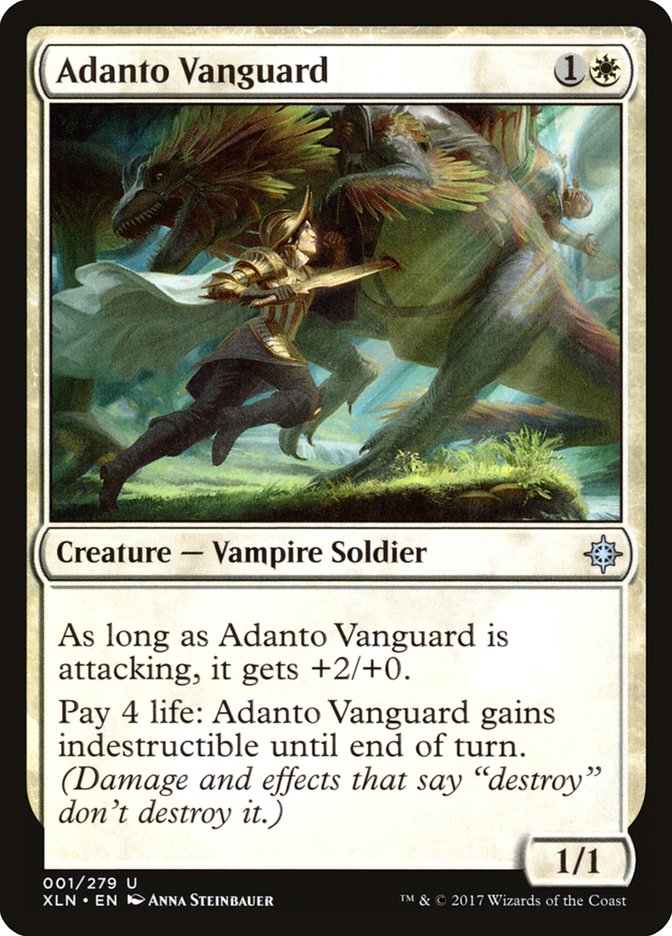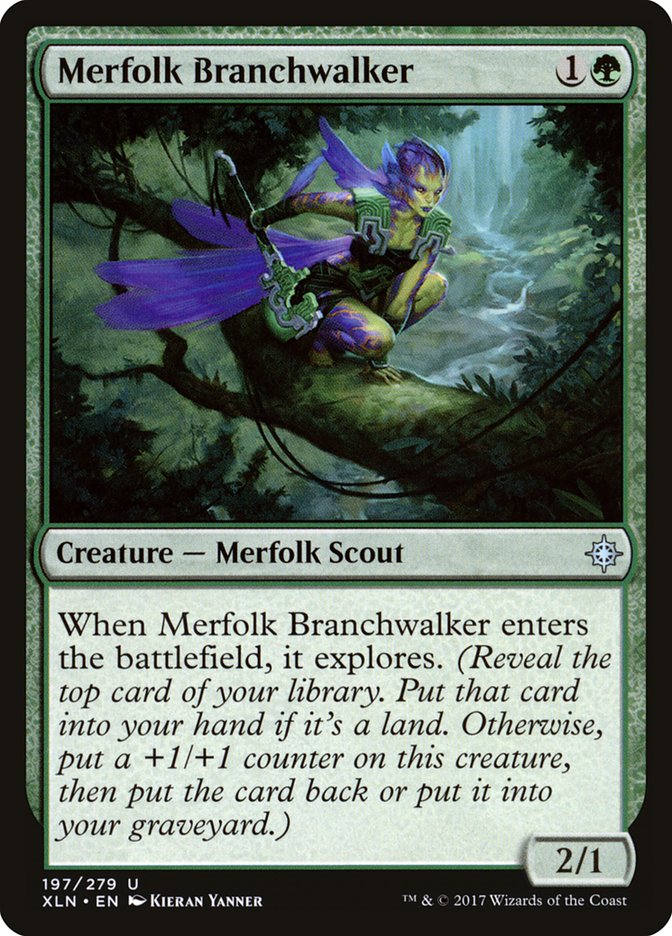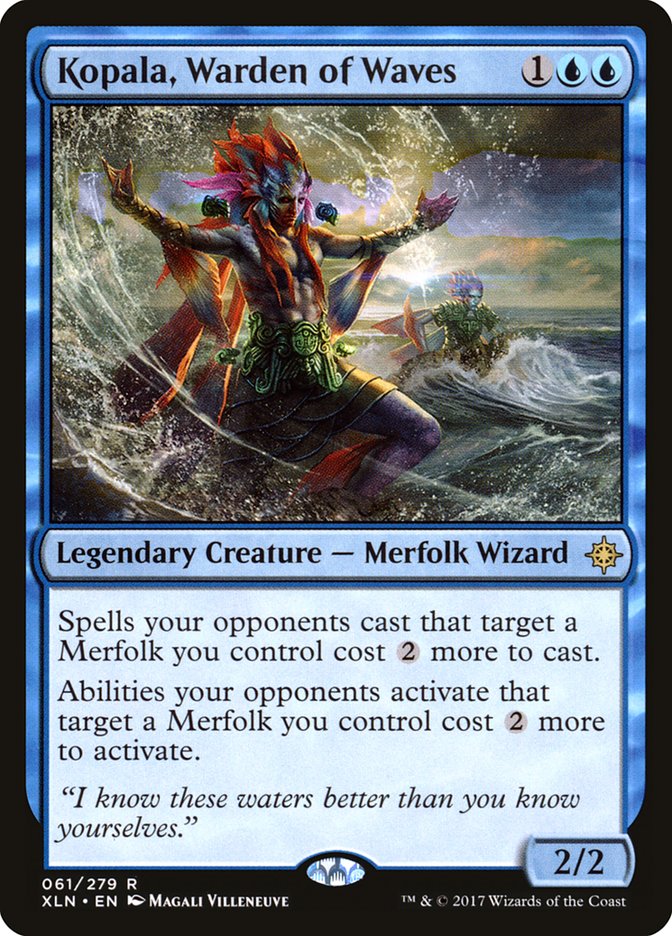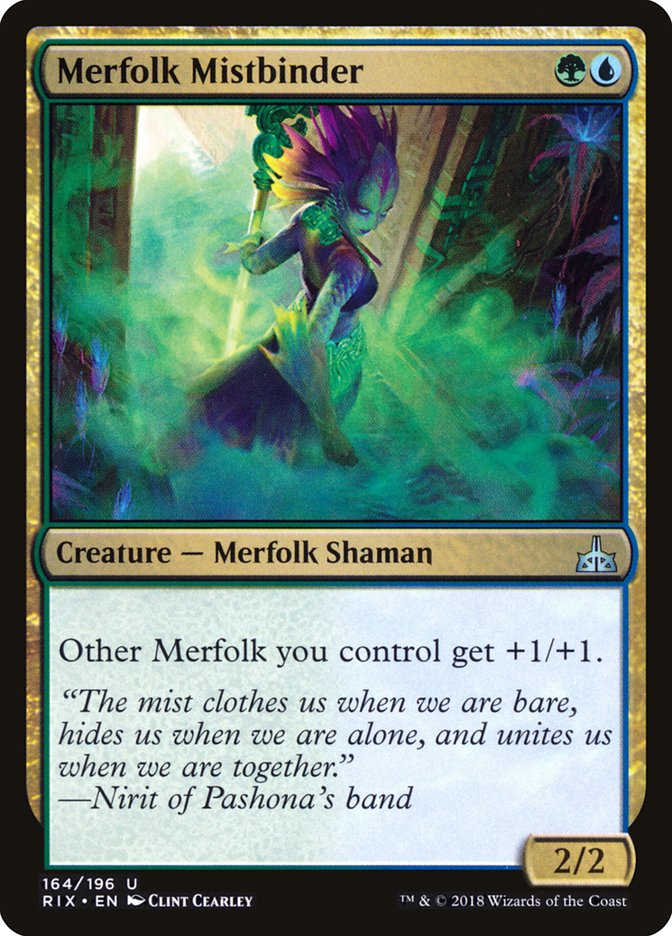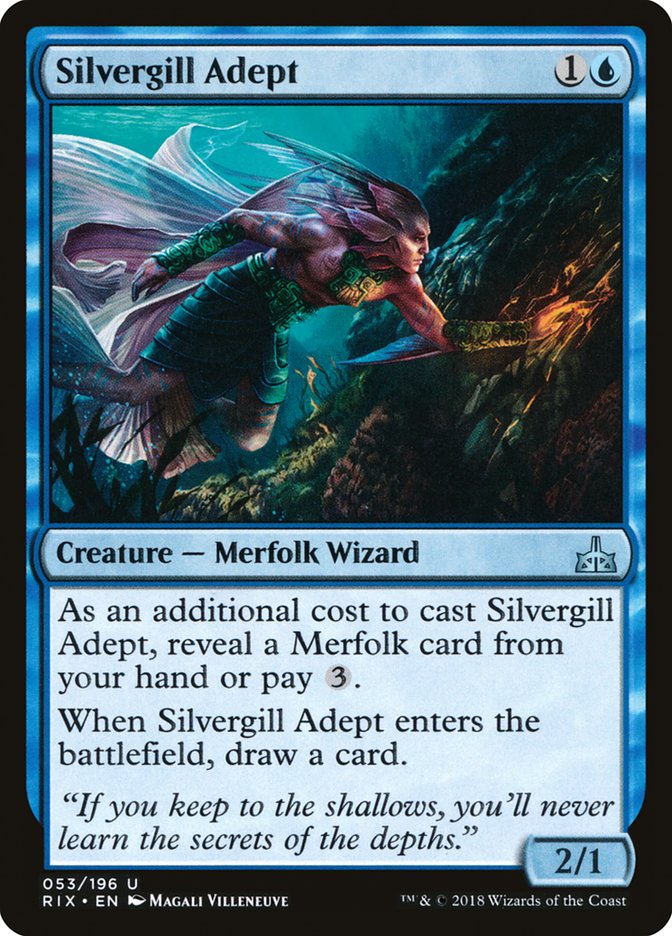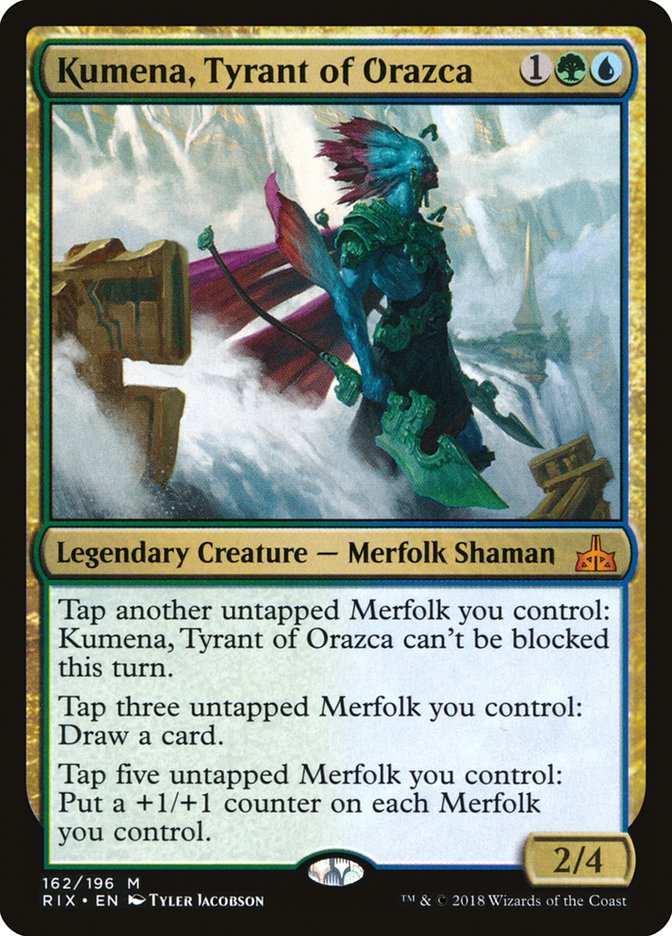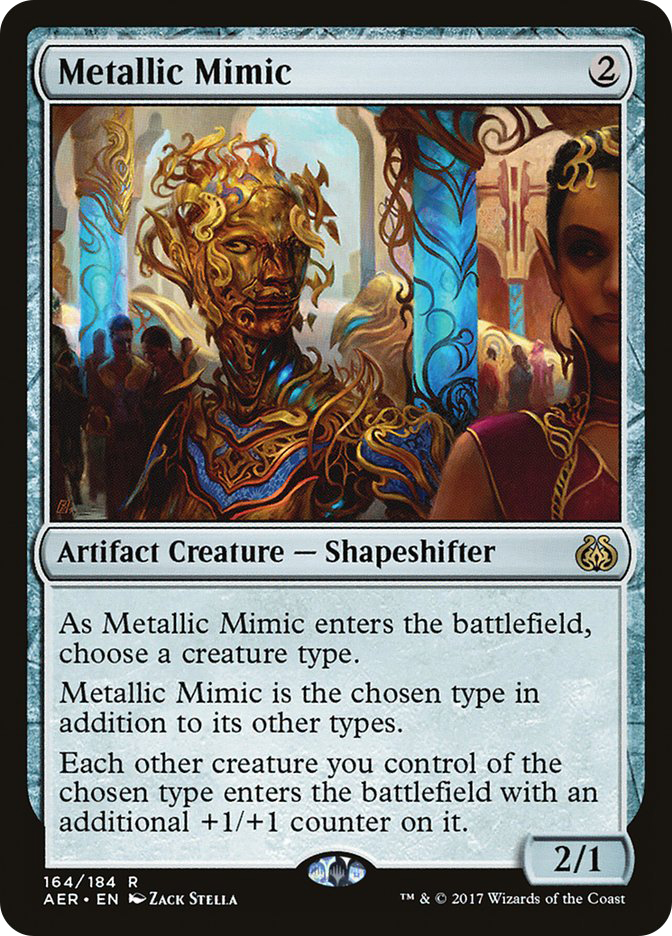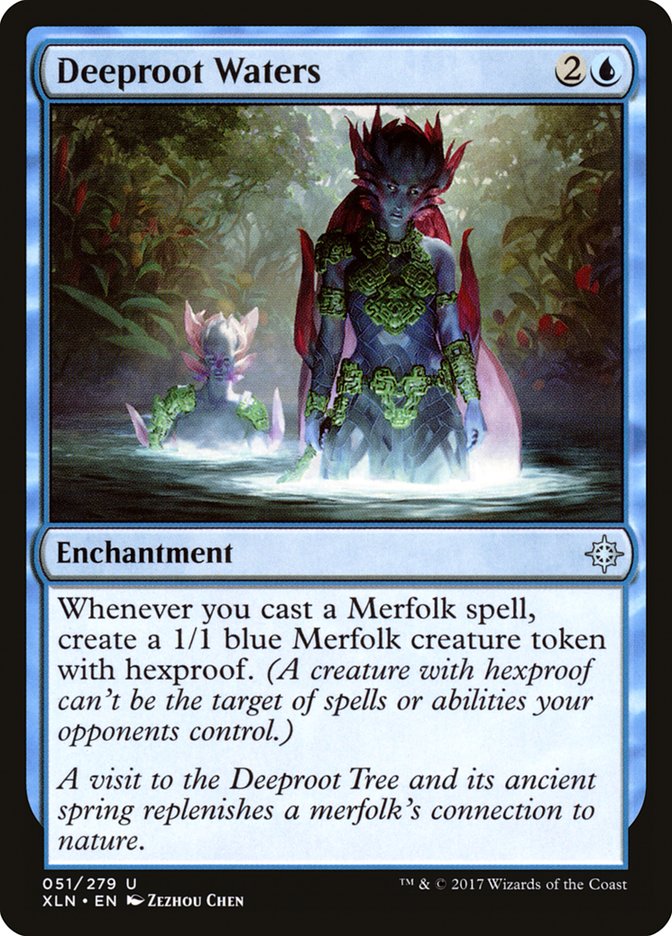Unable to cope with the unstoppable force that is the Kaladesh
energy mechanic, the tribes of Ixalan have been largely absent
from Standard since the set’s release.
Ixalan
preview season was dominated by Dinosaur talk, mostly due to seemingly
pushed cards like Carnage Tyrant and Regisaur Alpha, but they ultimately
fell flat on their very large faces. Despite the novelty of being able to
cast literal Dinosaurs in a game of Magic, the role of ‘midrange G/R’ deck
had already done much better by Temur Energy.
Pirates also received a fair amount of press, but while individual cards
like Hostage Taker and Ruin Raider have found themselves homes in various
Standard decks, a true ‘Pirate deck’ never came to fruition. The raid
mechanic asks for aggression, but a lack of good one-drops and little
payoff for putting Pirates in your deck ultimately sank the deck from the
start.
Amusingly enough, Vampires was the tribe that felt like an afterthought
during Ixalan previews, but ended up being the only one to
actually do well in a major event. Wilson Hunter took
a unique Mono-White Vampires deck
to 22nd place at Pro Tour Ixalan, which is one of the few victories that Ixalan tribal can claim in Standard so far. Still, the deck went
silent after the Pro Tour.
Merfolk was the only tribe in Ixalan with serious precedent, as Merfolk
Tribal has been a thing since day one thanks to Alpha’s Lord of
Atlantis. Merfolk has been a competitive deck in Legacy and Modern for
ages, so naturally the expectation was for Merfolk to be the highlight of
the Ixalan tribes.
Yeah… about that.
While people at least tried building Dinosaur, Pirate, and Vampire decks in
the early stages of Ixalan Standard, Merfolk was universally
ignored because most of the cards were frankly awful.
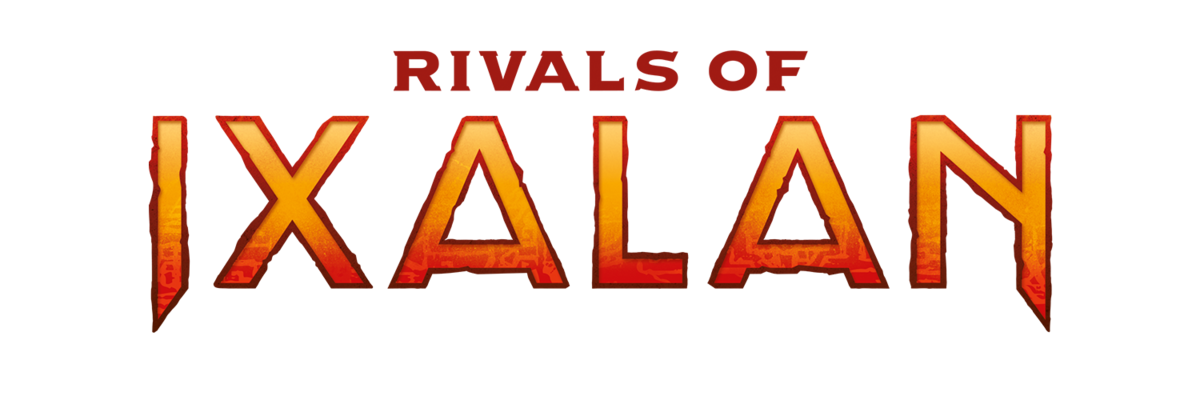
With Rivals of Ixalan on the horizon it’s time to start paying
attention, because Merfolk is no longer going to be the black sheep of the
bunch.
It’s common logic that tribal decks need a critical mass of playable cards
to put together a deck, and frankly it makes a lot of sense that theIxalan tribes failed on their first go of it. Prior to Ixalan, there were zero Dinosaurs or Merfolk legal in Standard,
and only pairs of Vampires and Pirates. With so few options available,
building a tribal deck that can have a high enough power level to compete
in Standard is very difficult. We saw this very recently with all of the
Innistrad Zombies needing Amonket‘s help to finally break through.
Quality is important too, as what tribal decks really need to succeed is
excellent one- and two-drops paired with big time payoff cards that reward
you for putting a ton of a certain creature type in your deck. Think cards
like Goblin Ringleader, Cryptbreaker, Priest of Titania, and Lord of
Atlantis. Even with only a small amount of Rivals of Ixalan
previewed so far, Merfolk is already getting quite the shot in the arm.
I’m sorry, did somebody just say Lord of Atlantis?
While Merfolk Mistbinder obviously lacks the islandwalk clause of Lord of
Atlantis or Master of the Pearl Trident, without something like Spreading
Seas in the format that isn’t going to matter too much. Two mana “lords”
are not something we see every day, with two mana being the sweet spot
between ‘payoff card’ and ‘early creature.’ Merfolk Mistbinder helps to
ensure that a Standard Merfolk deck can present a quick clock as well as
build a battlefield, both very important traits in Standard. Turn 1
Kumena’s Speaker, turn 2 Merfolk Mistbinder is a nice little beatdown
curve, and there’s plenty of precedent for successful two-mana lords.
What bodes best for Merfolk in Standard is that Merfolk Mistbinder is
actually the least impressive of the three new Merfolk cards we’re going to
look at today. Modern Merfolk is often chided for being nothing more than a
pile of Muscle Slivers– while a deck full of Muscle Slivers will have a
reasonably fast goldfish, once they go up against a deck looking to
interact they can often end up looking like a pile of Grizzly Bears.
Increasing power and toughness by itself is nice, but is not enough
overall.
Thankfully, the true hero of Modern Merfolk is ready to join us in Standard
once again.
Silvergill Adept is the best card in Modern Merfolk and it’s not
particularly close.
Tribal decks usually operate through the idea of critical mass. The
individual cards aren’t as powerful as other non-tribal cards, but when you
put a lot of them together at once they start to do very powerful things.
Typically this comes through some form of card advantage, which snowballs
as you get more and more of your tribe on the battlefield. You get more of
your things on the battlefield, so your things get better, which lets you
get more of them on the battlefield… repeat until you win.
Creatures (24)
- 4 Relentless Dead
- 4 Diregraf Colossus
- 4 Cryptbreaker
- 4 Metallic Mimic
- 4 Lord of the Accursed
- 4 Dread Wanderer
Lands (24)
- 22 Swamp
- 2 Westvale Abbey
Spells (12)

The most recent example of this is Zombies, which used cards like
Cryptbreaker and Diregraf Colossus to create a steady stream of card
advantage, but even a short look back into Magic’s history reveals that
most successful tribal decks operate under this model.
Creatures (12)
Lands (25)
Spells (23)

Faeries didn’t have a ton of raw card advantage, but Bitterblossom provided
the snowballing card advantage to power your tribal cards all by itself.
Creatures (20)
Planeswalkers (4)
Lands (16)
Spells (20)
Sideboard

Kithkin was on the fringe of being a true tribal deck, but also utilized
the synergistic card advantage of cards like Windbrisk Heights and
Cloudgoat Ranger to help supplement its beatdown plan.
Creatures (33)
- 4 Goblin Matron
- 1 Goblin King
- 4 Goblin Warchief
- 1 Goblin Sharpshooter
- 4 Goblin Piledriver
- 3 Gempalm Incinerator
- 1 Siege-Gang Commander
- 4 Goblin Ringleader
- 4 Skirk Prospector
- 3 Goblin Sledder
- 4 Mogg War Marshal
Lands (19)
Spells (8)

The ultimate example of a full-on tribal deck is Goblins, a deck that
looked to completely bury its opponent with card advantage via Goblin
Ringleader, Goblin Matron, and Gempalm Incinerator.
Power and toughness is not enough to make a tribal deck successful and this
is why cards like Silvergill Adept are so important. Being able to add a
meaningful body to the battlefield that interacts profitably with your
other cards and also replaces itself is quite a deal. Hell, Elvish
Visionary has seen a ton of play across various formats in a color that
usually has bigger creatures than blue. Silvergill Adept is the kind of
card that wins you the game without you actually realizing it. All tribal
decks need these sorts of nuts and bolts cards, and there aren’t many
better than Silvergill Adept.
Silvergill Adept and Merfolk Branchwalker form a nice duo that can both
draw cards and beat down, but the real gem is Kumena herself.
If Merfolk are going to be playable in Standard, Kumena, Tyrant of Orazca
is the reason why.
There’s a lot of unpack in this legendary three-drop, so let’s just go down
the abilities:
Tap another untapped Merfolk you control: Kumena, Tyrant of Orazca
can’t be blocked this turn.
On the surface this ability feels quite underwhelming. Needing to tap two
creatures just to do two damage is not very exciting, and with one other
Merfolk available you would almost always rather just draw a card instead.
Where this ability shines in Standard is as a way to poke at planeswalkers
on a congested battlefield. It doesn’t matter how many Thopter tokens your
opponent has to chump block, you can still get at that Chandra, Torch of
Defiance or Vraska, Relic Seeker when you need to. It’s not a huge draw,
but it’s a nice option to have.
Tap three untapped Merfolk you control: Draw a card.
Now we’re talking… the three words every Magic player loves to hear!
Kumena’s second ability is reminiscent of Cryptbreaker, which is lofty
praise. Cryptbreaker was the best card in the Zombies deck and the reason
it was able to grind through almost anything. Without the life loss clause,
the only limit on the amount of cards you can draw with Kumena’s ability is
your deck size. Being able to turn all of your smaller creatures into a
card draw engine is what allows you to overcome your opponent’s objectively
more powerful cards, the hallmark of a good tribal deck. We don’t get these
types of engines often in Standard, so it’s important to recognize them
when we do.
Now we can draw tons of cards and then find some way to win with all of our
Merfolk!
Tap five untapped Merfolk you control: Put a +1/+1 counter on each
Merfolk you control.
Wait, it’s also a win condition too?! What can’t Kumena do?
Having your engine card also be your win condition is astonishingly good,
as it allows you to fill your deck with good cheap creatures and
interaction. You can simply play Merfolk, draw cards, build a battlefield,
play more Merfolk, and draw more cards until it’s time for a double +1/+1
pump and a lethal attack. Having all of your Merfolk untapped to threaten
the power boost will help deter attackers, and after your opponent doesn’t
attack you can just use those Merfolk to draw more cards instead.
The fact that Kumena is likely playable without this third, “ultimate”
ability just goes to show the extremely high power level of the card as a
whole. It’s quite the nice cherry on top.
If you had shown me Kumena without a power and toughness, I would likely
have guessed it to be a 2/2, but Kumena weighs in at a hefty 2/4. That’s
huge! It doesn’t die to Lightning Strike, Abrade, or Sweltering Suns, and
with a little help from Merfolk Mistbinder or Metallic Mimic, Kumena can
get out of Glorybringer and Chandra, Torch of Defiance range as well.
Kumena can also safely block many of the best two and three mana creatures
in the format, giving you more time to get her engine online.
Kumena, Tyrant of Orazca is a serious game changer for Merfolk in Standard,
and with any sort of reasonable supporting cast is likely to push the deck
into tournament viability. With cards like Silvergill Adept and Merfolk
Mistbender entering the fray we’re probably about a good one-drop and a
good piece of interaction away from an exciting new deck. It’s not there
yet, but the beginning core might look something like this:
Metallic Mimic joins Merfolk Mistbinder in the quest to make your Merfolk a
little beefier, while helping to push your snowballing advantage. It’s also
quite nice alongside Deeproot Waters, which works very well with Kumena.
Deeproot Waters is a card that would require some serious testing, but
looks appealing in theory as an engine card. What’s so nice about this
proposed core is now nice of a mana curve it has. One and two-drops are the
key for any creature tribal deck, and this many quality two-drops will
allow Merfolk to double spell much faster than other decks.
The biggest issue is that blue and green lack any real form of removal.
Standard is full of creatures that need to be killed and part of what made
Zombies so good was its mixture of a great engine with good removal. We
don’t have that answer yet, and whether it’s a new Rivals of Ixalan card (maybe a Merfolk Aether Adept?) or we have
to splash a color remains to be seen.
Are We There Yet?
As someone who loved playing Zombies and drawing cards with Cryptbreaker,
I’m very excited for the prospects of Merfolk in Standard.
Ixalan
failed at the very difficult task of bringing tribal to an energy-riddled
Standard format, but with almost zero support from the other Standard sets,
it makes a lot of sense why it did. Now with Rivals of Ixalan we
can only hope that there are this many great surprises waiting for all the
tribes!


